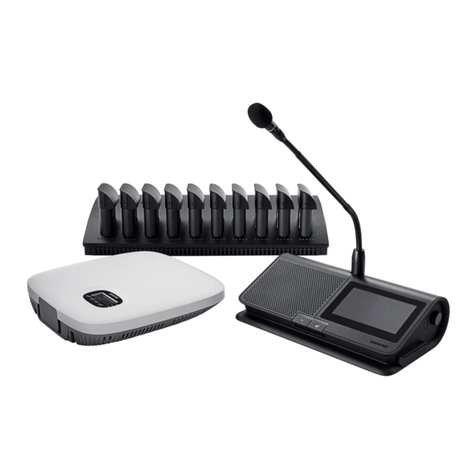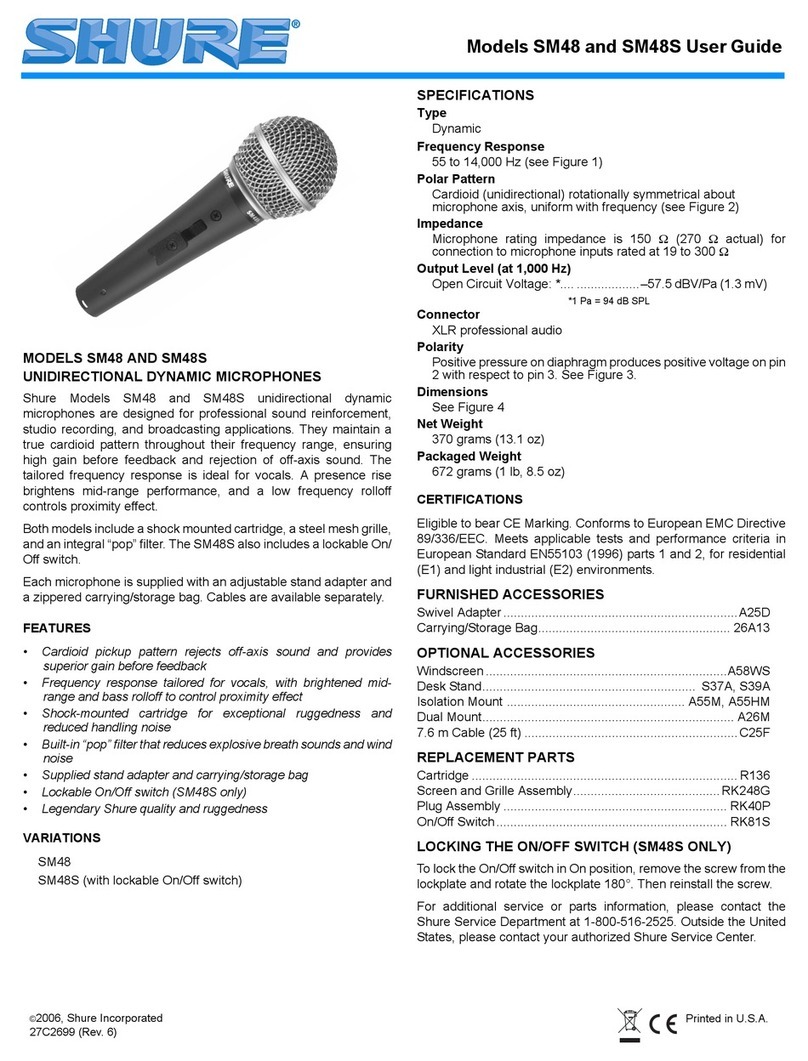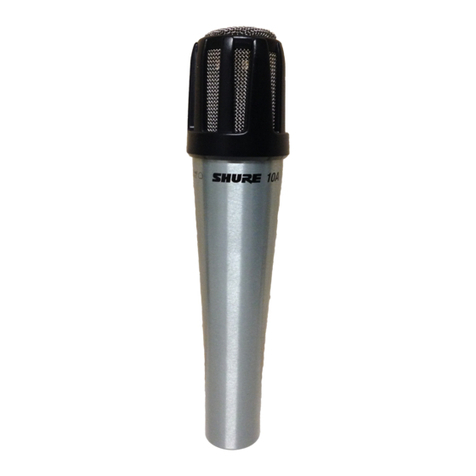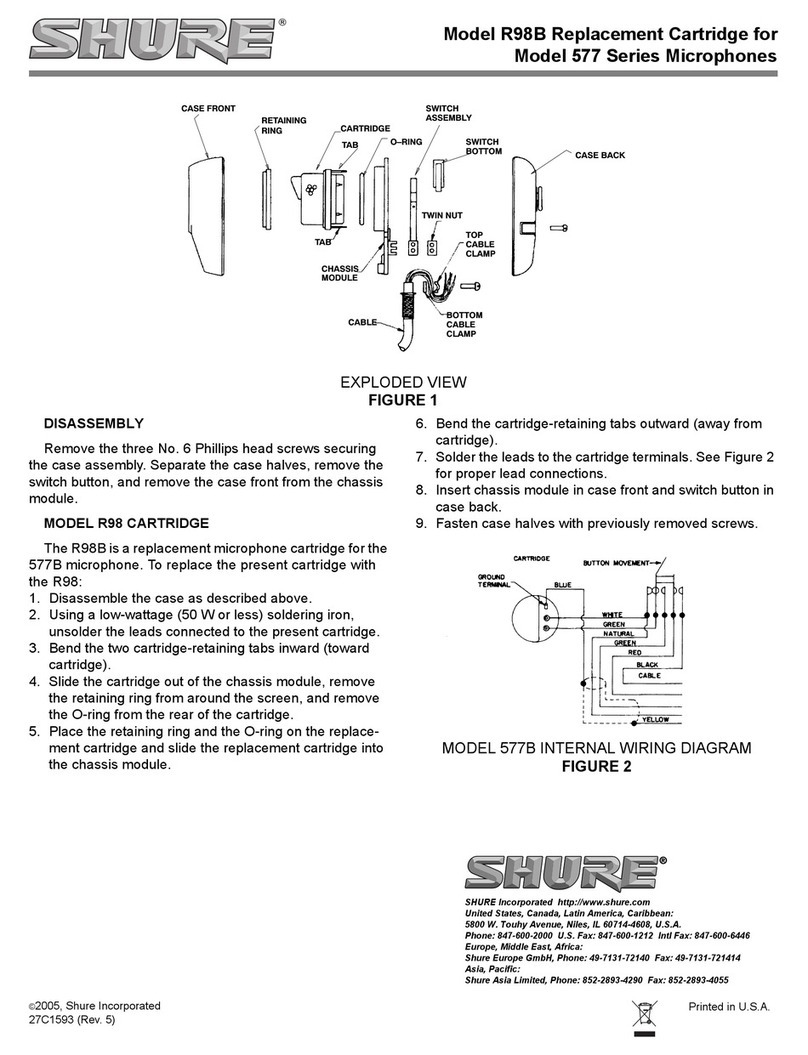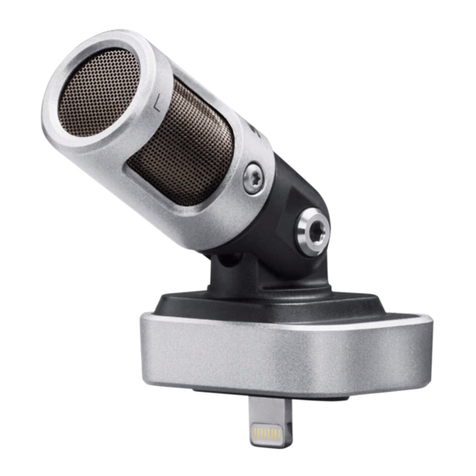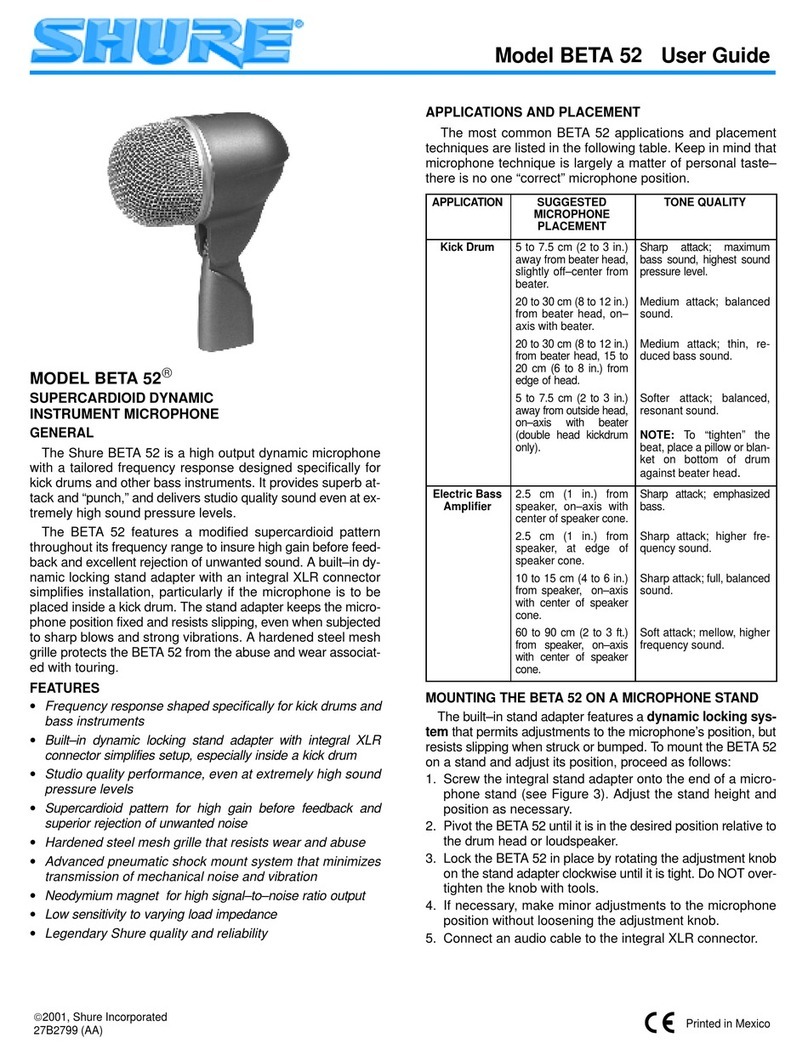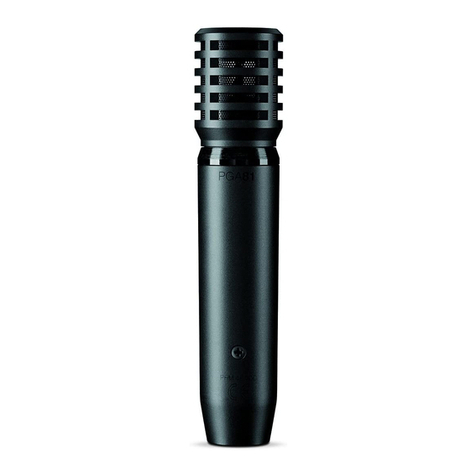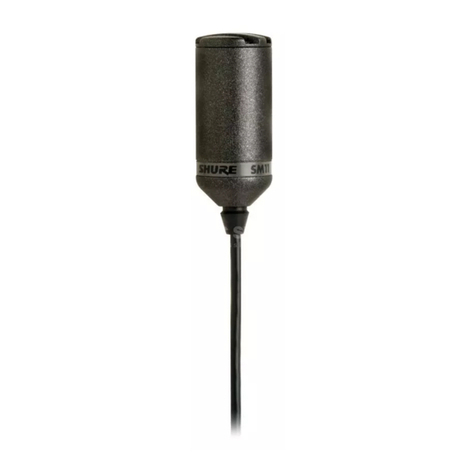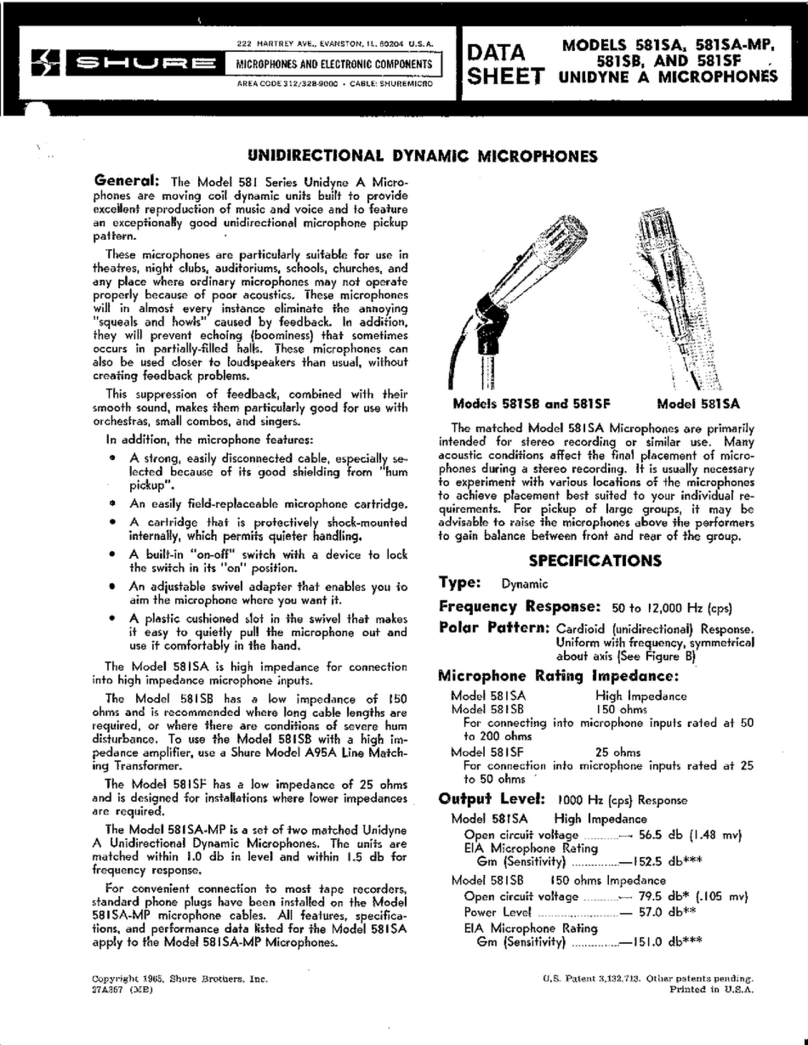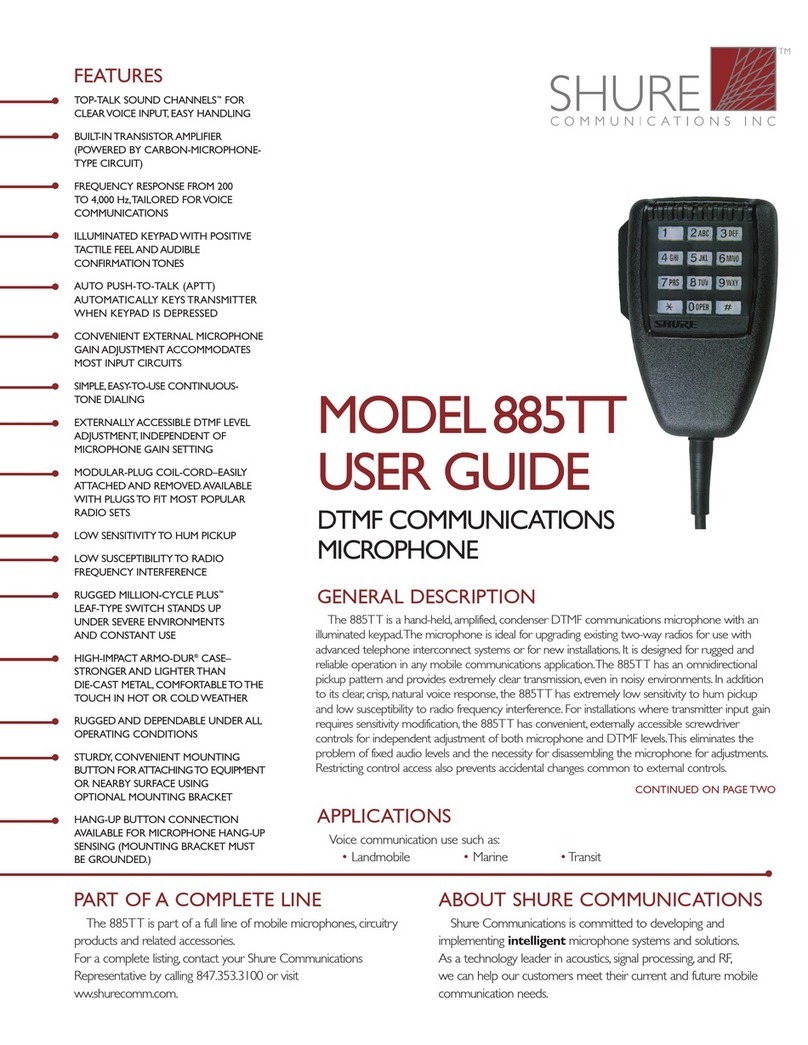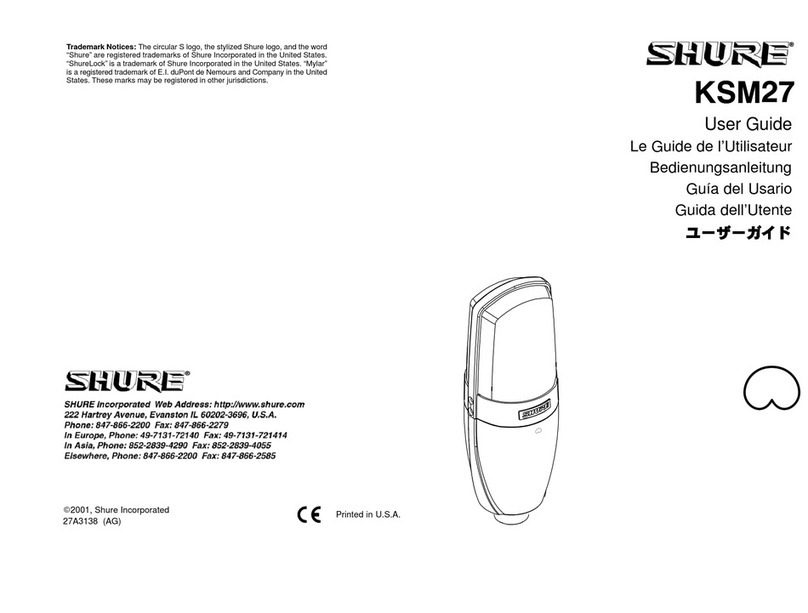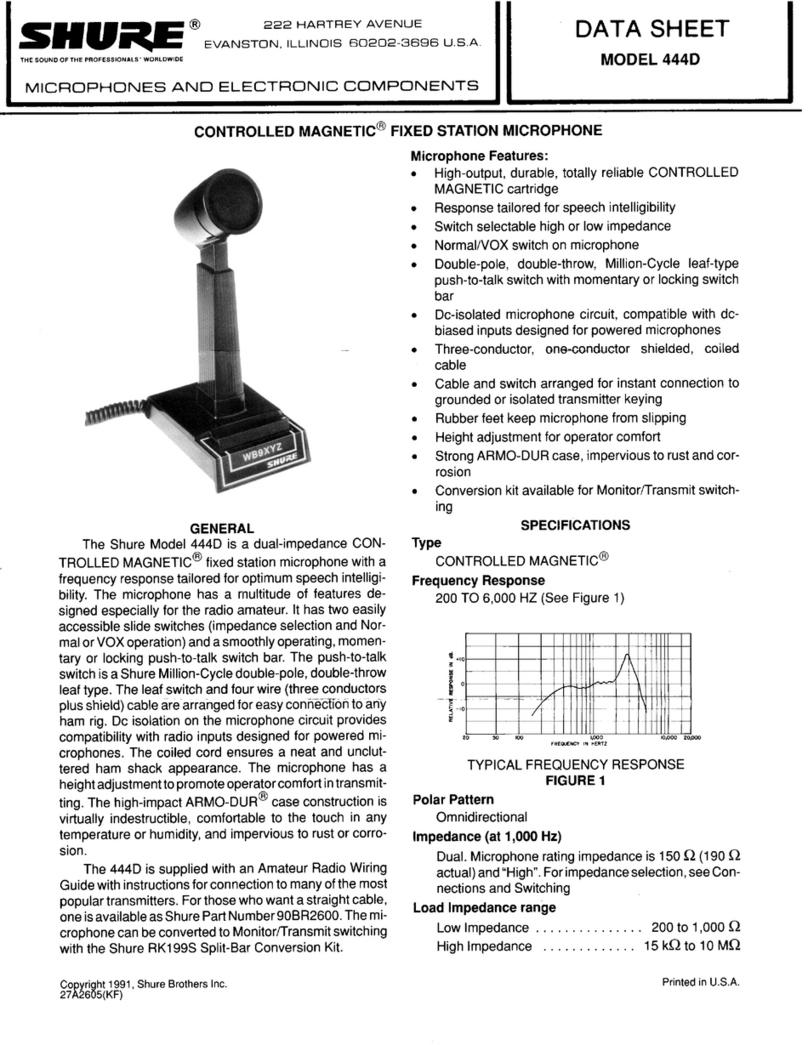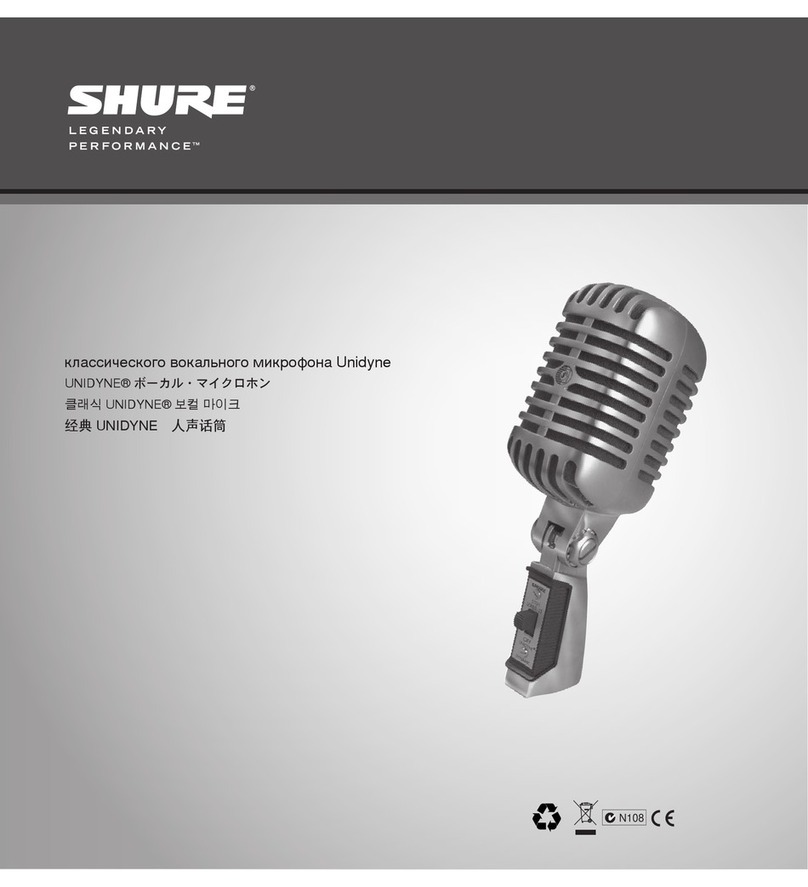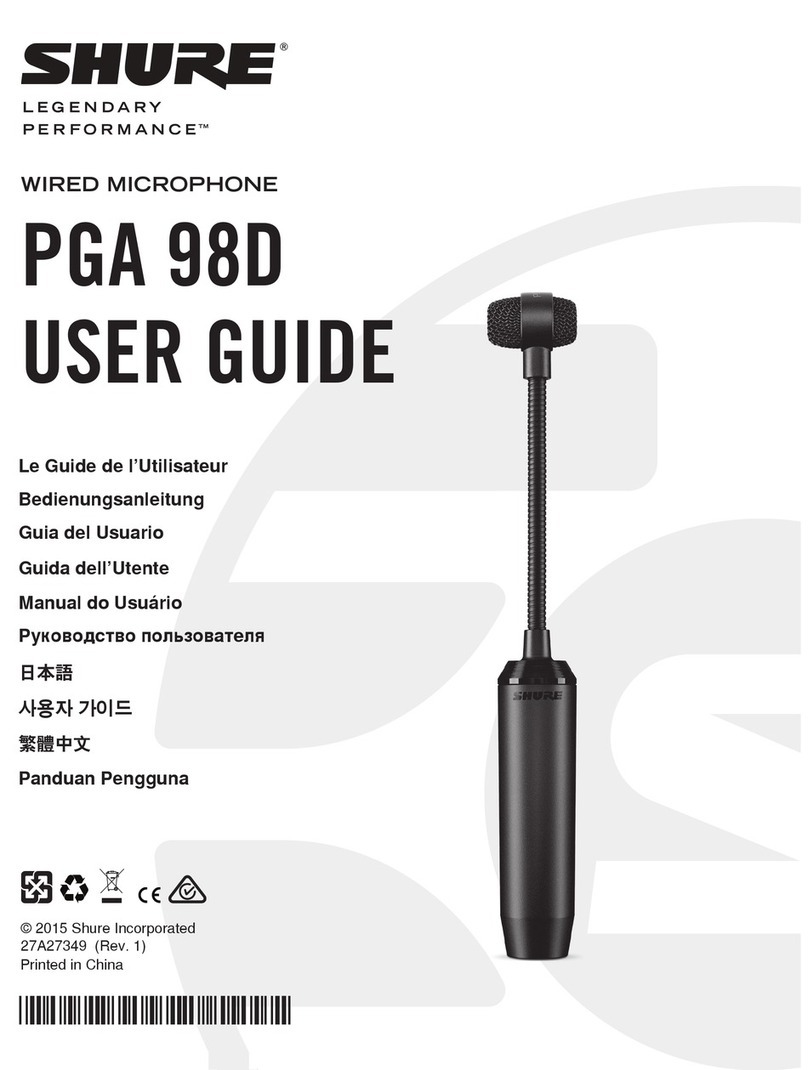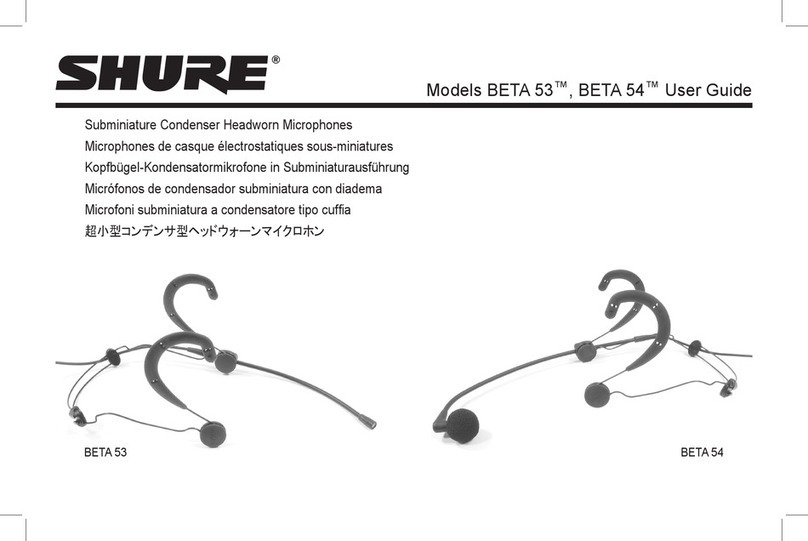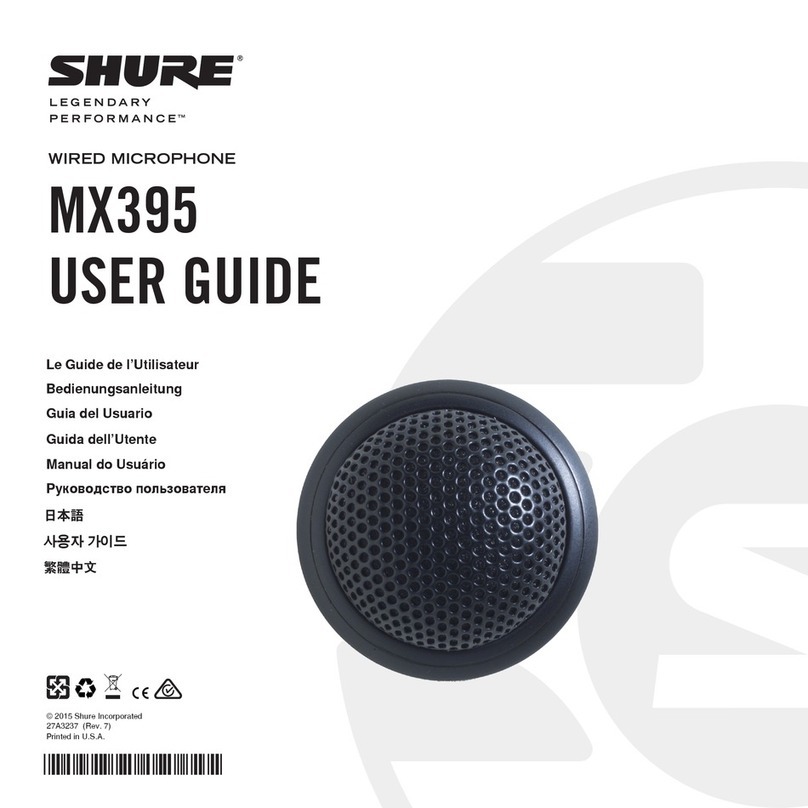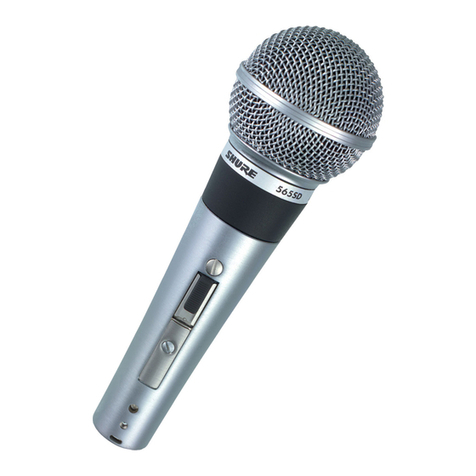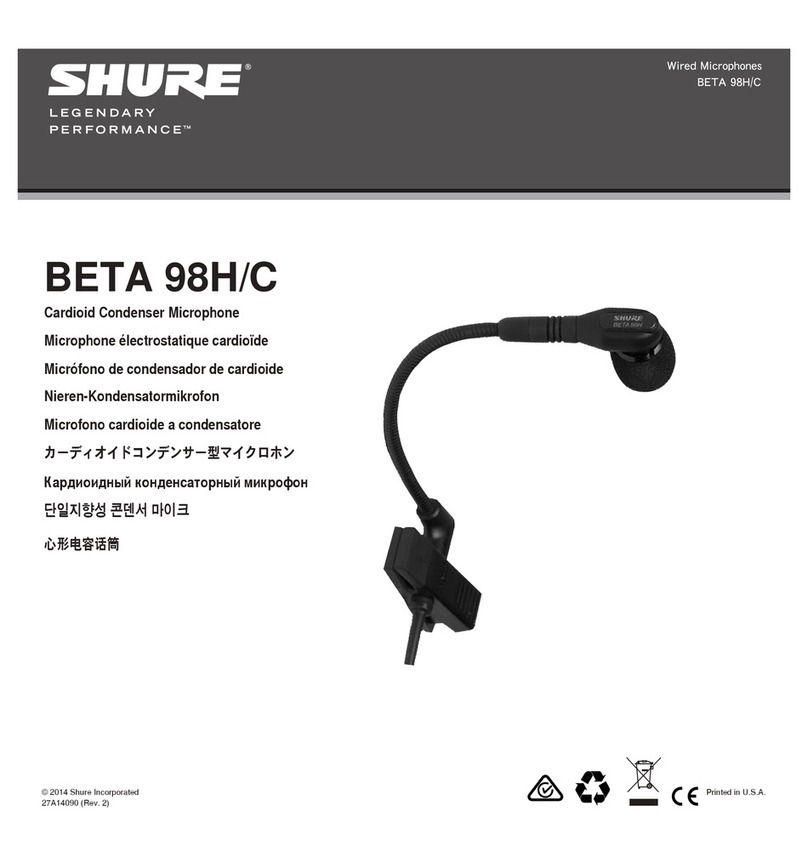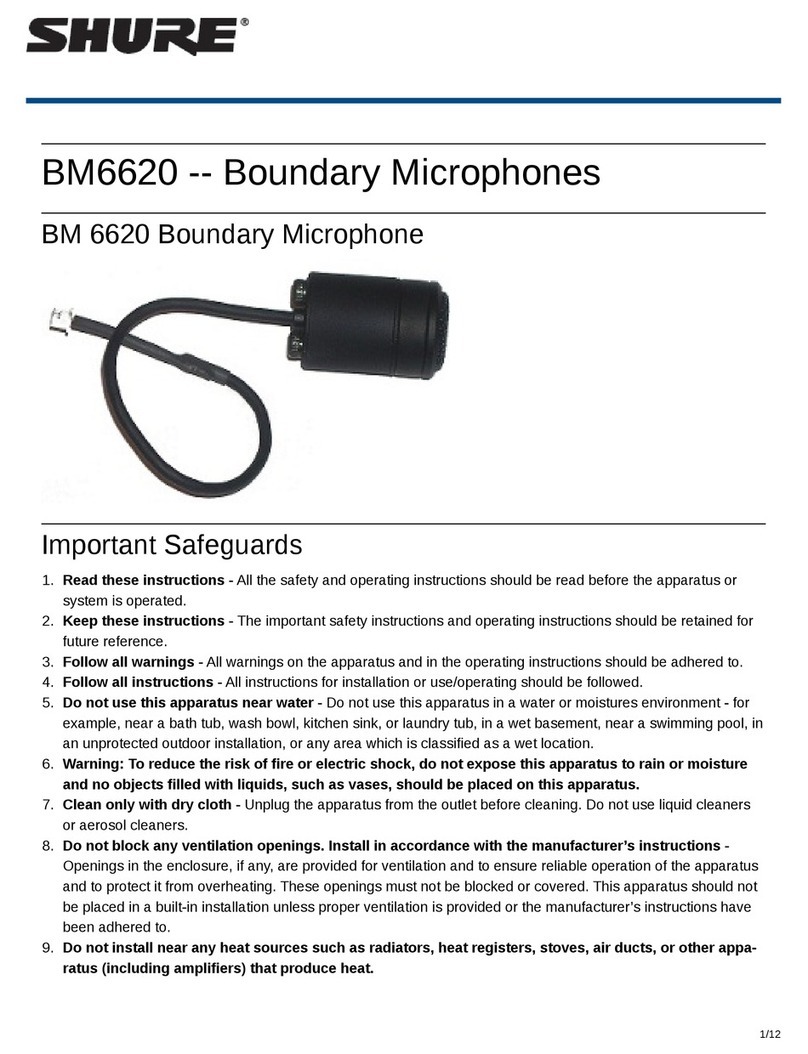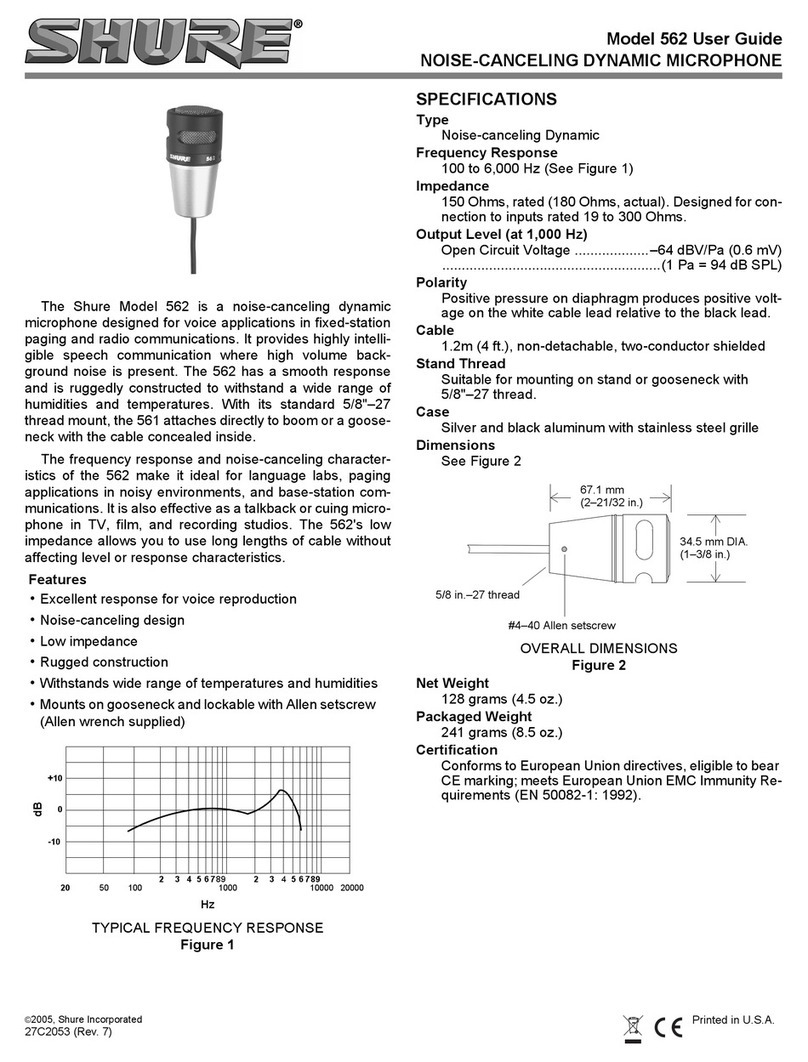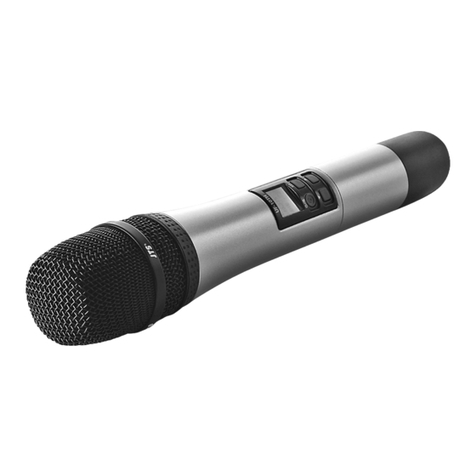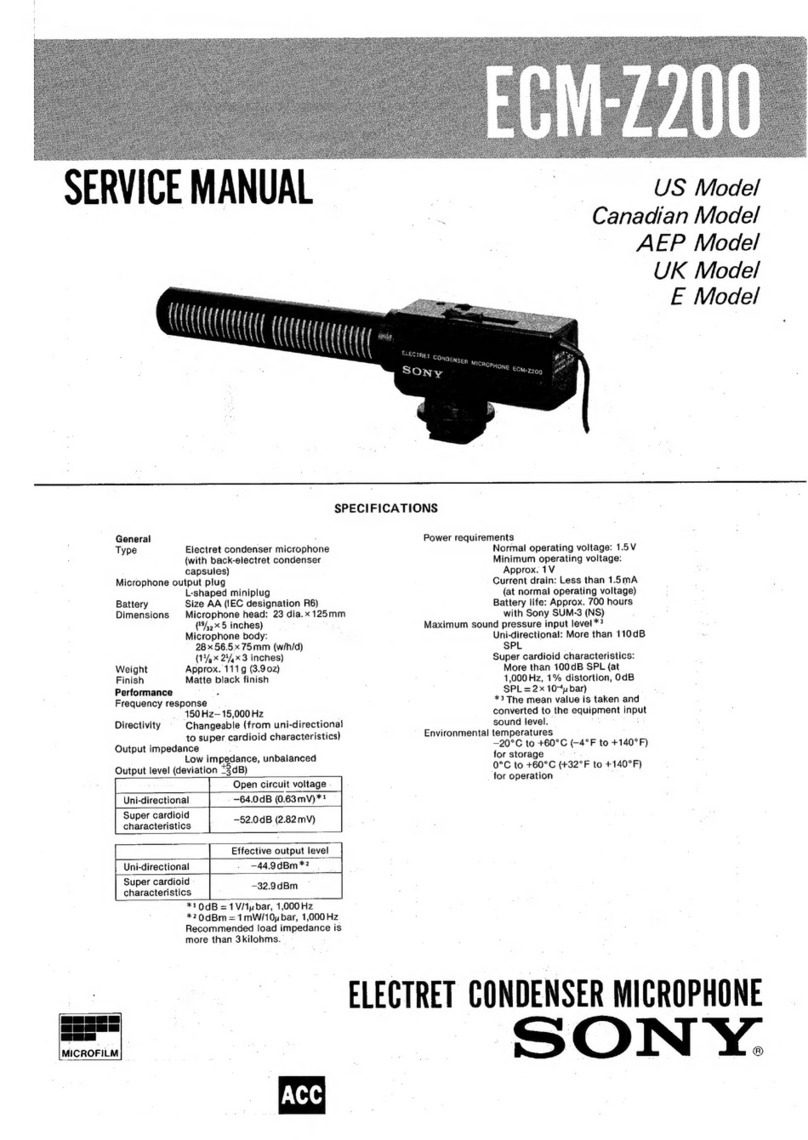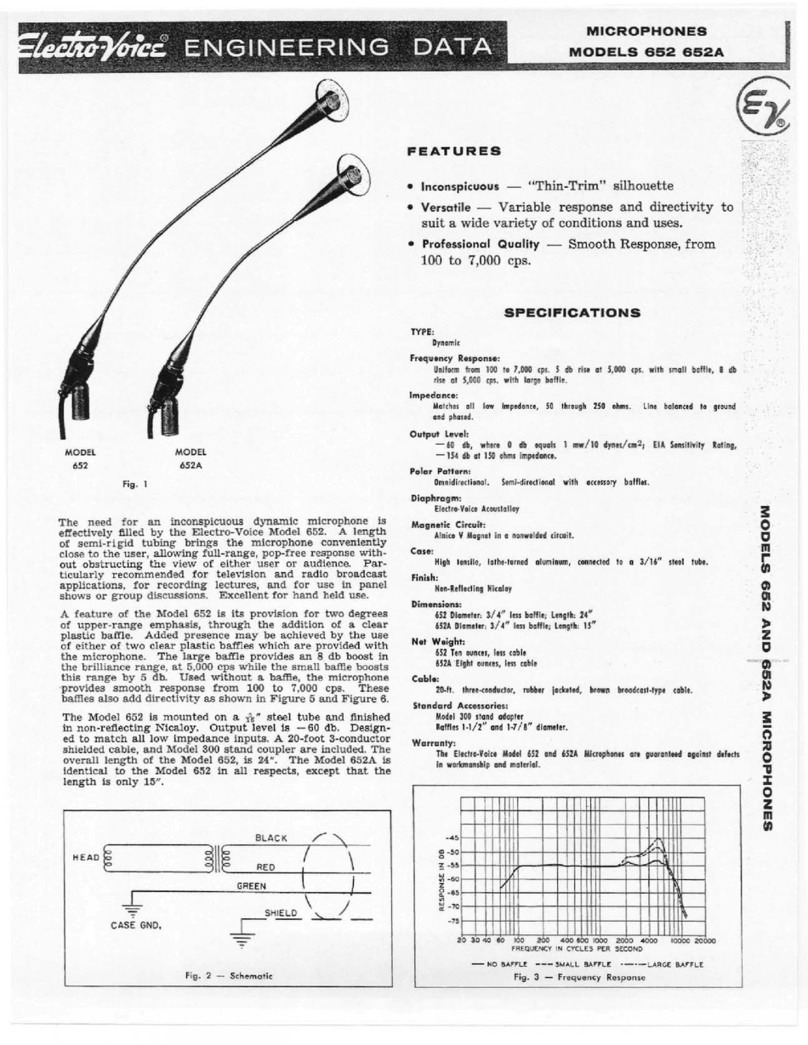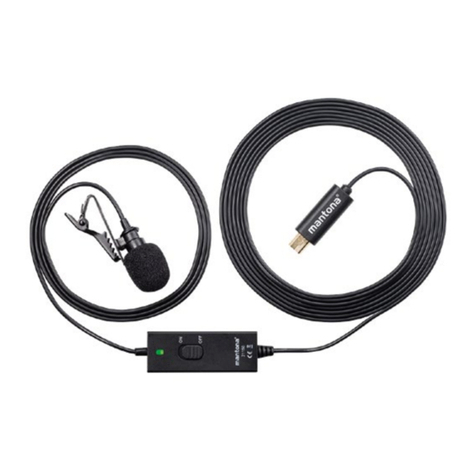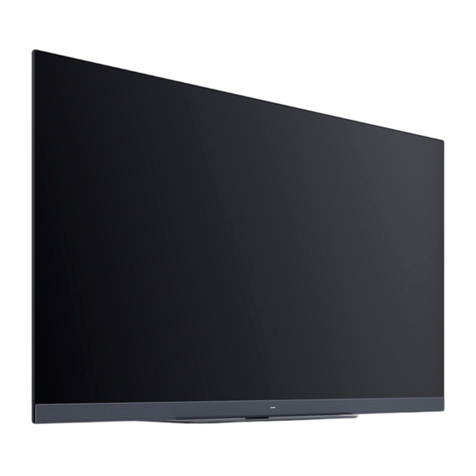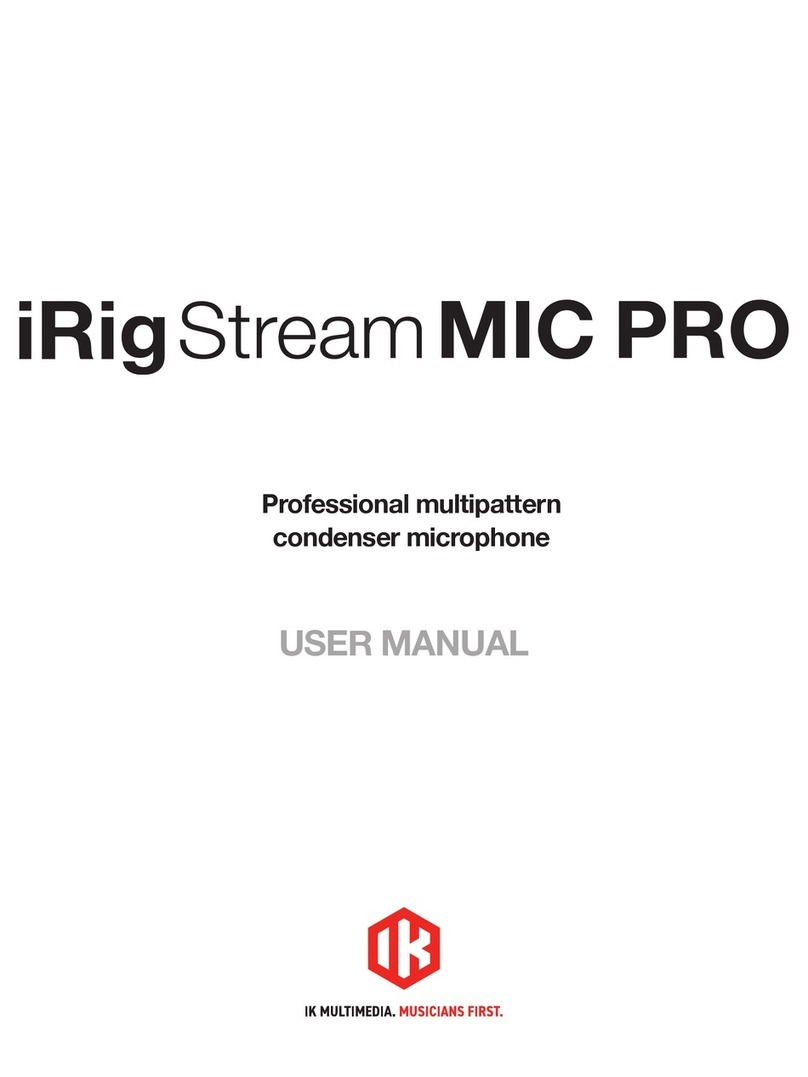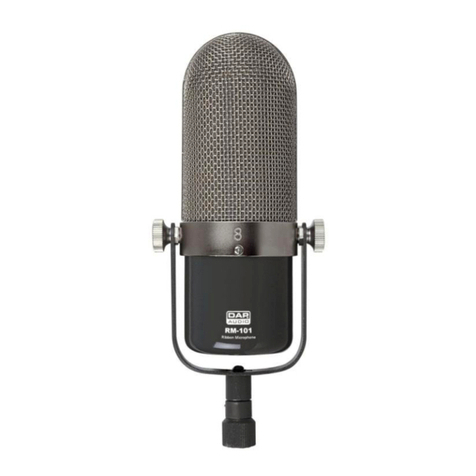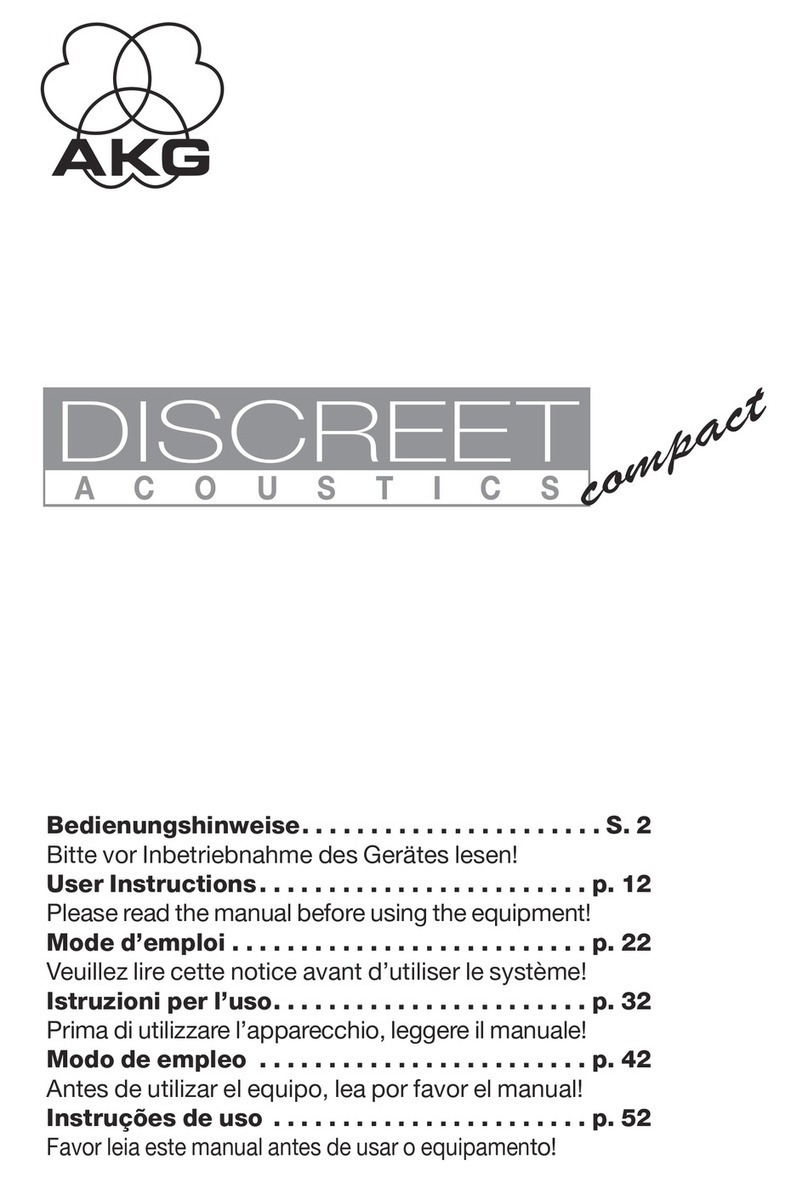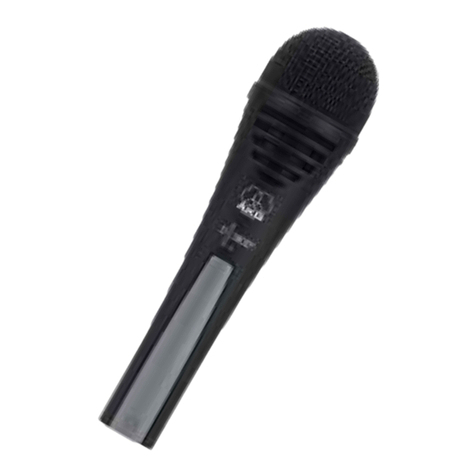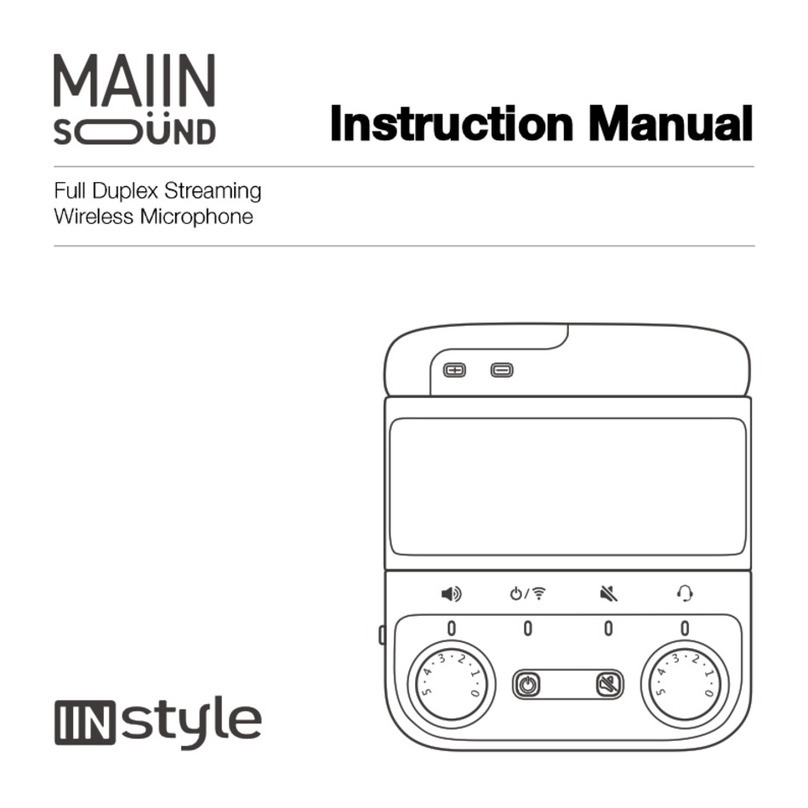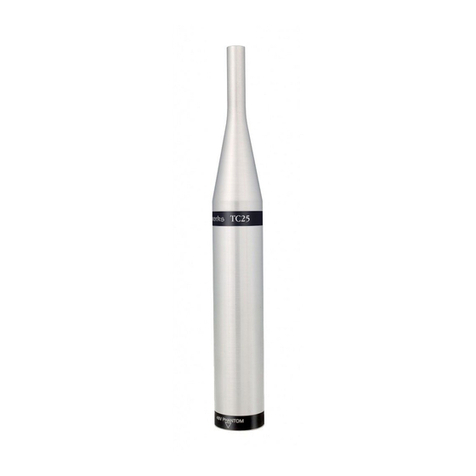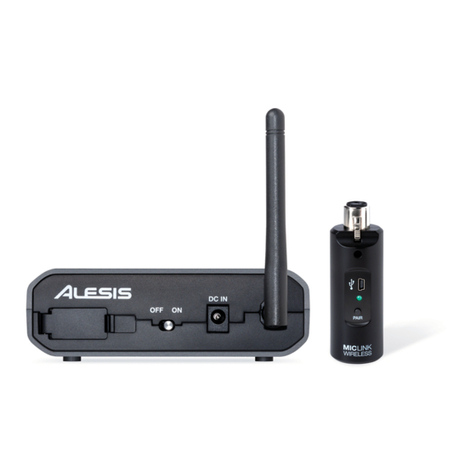
7
MICRÓFONO CON CUELLO DE CISNE PARA
ESCRITORIO MICROFLEX MX400D
GUIA DEL USUARIO
GENERALIDADES
Los micrófonos Microflex MX400D de Shure son micrófo-
nos de condensador de electreto miniatura con cuello de
ganso que tienen una base para escritorio y un cable de 3
m (10 pies) de largo. La base para escritorio permite usar es-
tos micrófonos en salas de uso general, en situaciones en
las cuales se requiere una instalación rápida, o cuando una
instalación permanente resulta poco práctica.
CARACTERISTICAS
•Gama dinámica y respuesta a frecuencias amplias para una re-
producción precisa del sonido en todo el espectro audible
•Cápsulas intercambiables que permiten elegir el patrón polar
óptimo para cada aplicación
•Salidas equilibradas sin uso de transformadores para aumentar la
inmunidad a los ruidos en tramos largos de cable
•Interruptor programable y LED indicador de encendido/apa-
gado
•Bornes de entrada/salida lógica para control remoto o para
usarse con consolas mezcladoras automáticas
•Pantalla de espuma con anillo elástico
VARIEDADES DE MODELOS
•MX412D: Micrófono de condensador miniatura montado en
cuello de cisne de 304,8 mm (12 pulg), para escritorio.
•MX418D: Micrófono de condensador miniatura montado en
cuello de cisne de 457,2 mm (18 pulg), para escritorio.
SELECCION DEL PATRON POLAR DE CAPTACION
Todos los micrófonos Microflexse ofrecen con una de tres
cápsulas intercambiables. El patrón polar de captación de la
cápsula se designa por el sufijo que tiene en su número de
modelo:
/C = Cardioide, /S = Supercardioide, /O = Omnidireccional
Cardioide (C). Se recomienda para aplicaciones generales
de refuerzo de sonido. Angulo de captación (nivel de –3 dB)
= 130.
Supercardioide (S). Se recomienda para aplicaciones de
refuerzo de sonido en las cuales la zona de cobertura es
más estrecha o se requiere un alcance mayor. Angulo de
captación (nivel de –3 dB) = 115.
Omnidireccional (O). Se recomienda para aplicaciones
de grabación y de monitoreo remoto de sonido. Angulo de
captación = 360
GUIA GENERAL DE INSTALACION
1. Apunte el micrófono hacia la fuente sonora deseada (es
decir, el conferencista) y alejado de las fuentes no de-
seadas, como por ejemplo, los altoparlantes.
2. Coloque la cápsula del micrófono a una distancia de 15
a 30 cm (6 a 12 pulg) de la fuente sonora deseada.
3. Siempre use la pantalla provista o la pantalla metálica
opcional para controlar el ruido causado por el aliento.
4. Si cuatro o más micrófonos estarán activos simultánea-
mente, se recomienda usar una consola mezcladora
automática tal como la SCM810 ó la FP410 de Shure,
para reducir la realimentación y los ruidos indeseados.
INSTALACION DEL MICROFONO
Fijación del micrófono a una superficie de montaje
(figura 1)
1. Atornille dos tornillos para madera N6 en la superficie
de montaje, separados 50,8 mm (2 pulg) entre sí.
2. Encaje los agujeros alargados sobre las cabezas de los
tornillos y empuje el micrófono en su posición de fija-
ción. Ajuste la altura de los tornillos según sea necesa-
rio para fijar el micrófono.
Instalación de la pantalla de espuma (figura 2)
1. Deslice la pantalla de espuma sobre el micrófono hasta
que se enganche en la ranura ubicada debajo de la
cápsula del mismo.
2. Para quitar la pantalla, abra la separación de su anillo
de montaje con un destornillador o la uña y tírela cuida-
dosamente hasta quitarla.
FUNCIONES DE LOS INTERRUPTORES DIP
INTERNOS
Todos los modelos MX400D tienen interruptores DIP in-
ternos que permiten al usuario programar la función del in-
terruptor de encendido para una variedad de usos. Para lo-
grar acceso a los interruptores DIP, quite la placa inferior.
DEFINICION DE SEÑALES LOGICAS DE LOS BORNES
Borne de tierra de circuitos lógicos (LOGIC GND): Se con-
ecta al conductor de puesta a tierra de los circuitos lógicos
de una consola mezcladora automática, conmutador u otro
equipo. Puede modificarse para evitar los bucles de puesta
a tierra. Consulte el párrafo ”Modificación de lógica de fun-
cionamiento del MX400D”.
Borne de salida del interruptor (SWITCH OUT): Propor-
ciona un nivel lógico bajo de TTL (0 VCC) cuando se oprime
el interruptor de membrana. De otro modo, proporciona un
nivel lógico alto de TTL (5 VCC). Esta señal siempre está
disponible para todas las configuraciones de uso del inter-
ruptor. La función de salida del interruptor proporciona una
puesta a tierra momentánea cuando el interruptor S1 está
apagado (OFF) y se engancha en puesta a tierra cuando
está encendido (ON).
MODIFICACION DE LOGICA DE FUNCIONAMIENTO
DEL MX400D
Para aislar la tierra de circuitos lógicos de la tierra de
circuitos de audio (figura 6)
1. Saque el puente R40 de la parte superior de la tarjeta
de circuitos.
2. Asegúrese que el borne de tierra de circuitos lógicos
(LOGIC GND) quede conectado al conductor de puesta
a tierra de los circuitos lógicos de la consola mezcladora
automática, conmutador u otro equipo.
Configuración del borne de salida del interruptor
(SWITCH OUT) para funcionamiento momentáneo,
independiente de la posición S1 (figura 6)
Para permitir la conexión de equipo que requiera la puesta
a tierra momentánea del micrófono (aun cuando se desea
que el micrófono se enganche en posición encendido/apa-
gado), efectúe el procedimiento siguiente:
1. Saque el puente R45 de la parte superior de la tarjeta
de circuitos.
2. Vuelva a instalar el puente R45 en la posición R46 de la
parte superior de la tarjeta de circuitos.
Modificaciones especiales del interruptor
El interruptor S4 puede usarse para modificaciones espe-
ciales de los circuitos lógicos. Cuando el interruptor S4 está
encendido (ON), el borne W4 se conecta con el borne W5.

